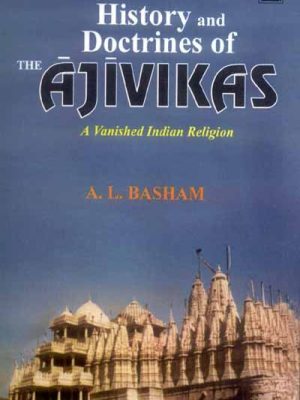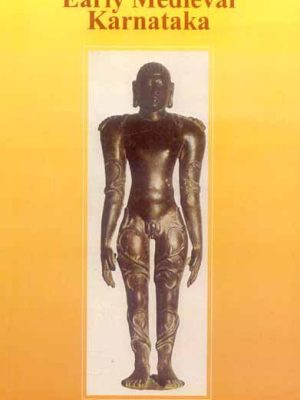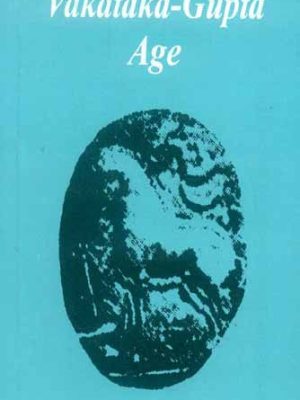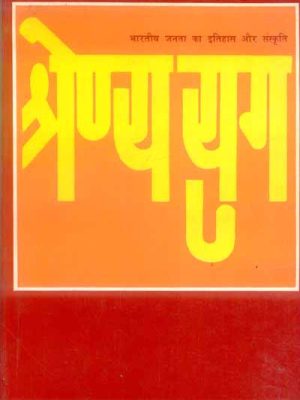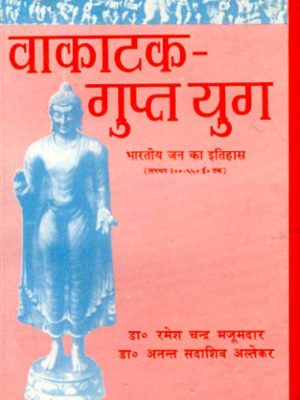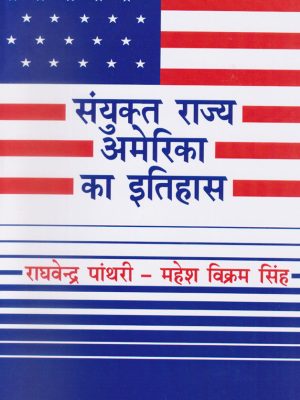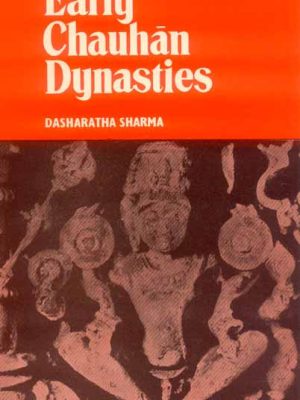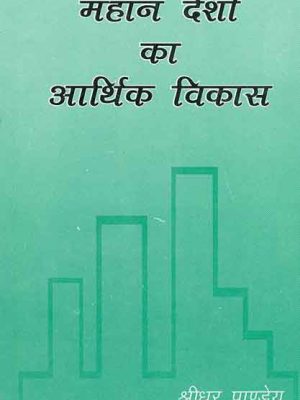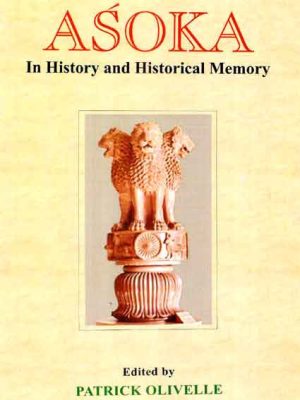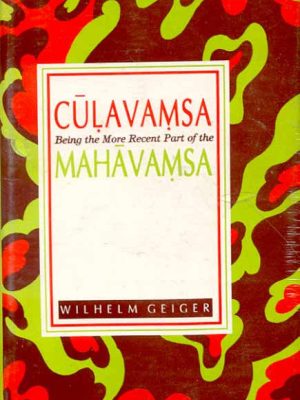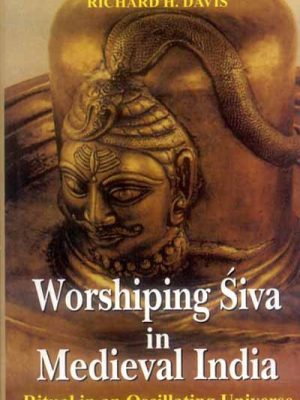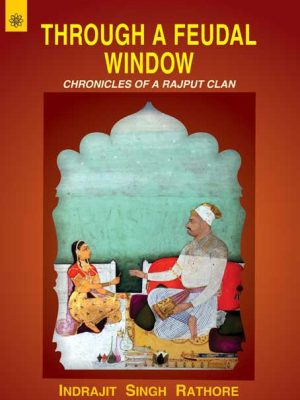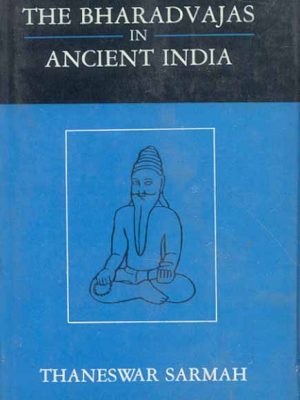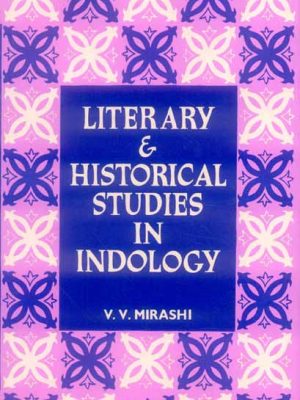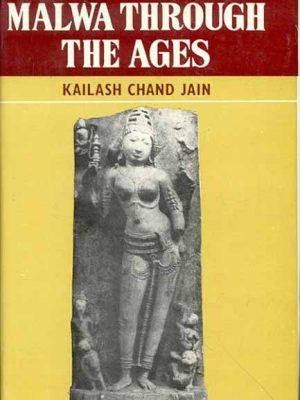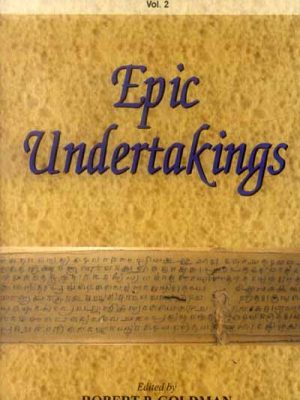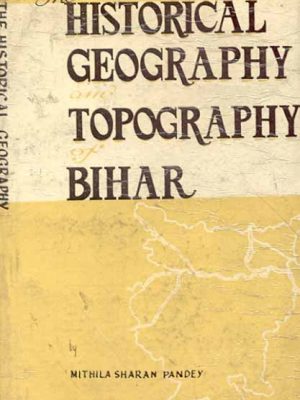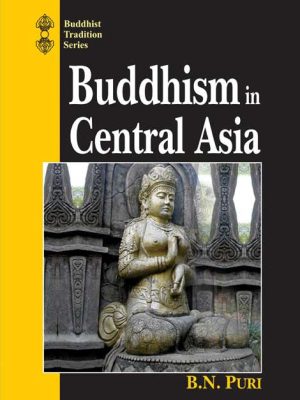Motilal Banarsidass
-
History and Doctrines of the Ajivikas: A Vanished Indian Religion
History and Doctrines of the Ajivikas: A Vanished Indian Religion
The book presents the history and the doctrines of the Ajivikas who formed a third heretical sect besides the sect of Gautama Buddha, the founder of Buddhism and that of Mahavira Vardhamana, the twenty-fourth Tirthankara of the Jainas. The three heterodox sects react against the ritualistic creed of the Vedists.
The cult of Ajivikas was founded by Makkhali Gosal, the contemporary of Mahavira Vardhamana, on the basis of strict determinism with a belief in the all-embracing rule of Niyati (principle of order). According to Gosal, it was Niyati which ultimately governed our action, controlled phenomena and left no room for human volition.
It will throw new light on an interesting and significant aspect of Indiaês past, and will encourage further research.
This book is divided into fifteen chapters discussing elaborately different aspects of the subject matter. The comprehensive Bibliography and Index are the added features for the researchers for comparative as well as further study of yet unexplored areas.
₹895.00 -
Jainism in Early Medieval Karnataka
Jainism in Early Medieval Karnataka attempts to explain the prevalence of image worship, tantrism, priesthood and ritualistic formation which characterized Karnataka Jainism in the early medieval period. The book also seeks to examine the social and economic basis of Jaina monasteries in all parts of the Kannada region.
₹595.00 -
The Vakataka-Gupta Age
Many text on music dance and drama continued to be written in different parts of India until the 17th century. Between the 12th and the 16th century regional styles emerged. Medieval texts have been discovered in all parts. One amongst these is the Srihastamuktavali belonging to the eastern tradition.
₹1,100.00The Vakataka-Gupta Age
₹1,100.00 -
Shrenya Yug: Hindi Translation of Classical Age
Shrenya Yug: Hindi Translation of Classical Age is authored by R. C. Majumdar, Shivdaan Singh Chauhan.
₹1,495.00 -
Vakataka-Gupta Yug: Laghbhag 200-550 E Tak
Vakataka-Gupta Yug: Laghbhag 200-550 E Tak is authored by R. C. Majumdar, ‘a. S. Altekar
₹695.00 -
Sanyukt Rajya America ka Itihas: (Upniveshik Kala Se Sheet Yuddh Tak)
Sanyukt Rajya America ka Itihas: (Upniveshik Kala Se Sheet Yuddh Tak) is authored by raghavendra panthari
₹1,100.00 -
Early Chauhan Dynasties
n the present volume, for the first time, a connected history of the
Chauhans, from their beginnings in Bhrgukachchha in eight century A.D. to
the time of Ala-ud-din Khalji and Hammira in the fourteenth century has
been presented. The author has shown that the Agnikula myth goes back to
the Ramayana and is, in fact, traditional to Aryan Hindus
₹895.00Early Chauhan Dynasties
₹895.00 -
Mahan Deshon ka Aarthik Vikas
Mahan Deshon ka Aarthik Vikas is authored by Sridhar pandey
₹895.00Mahan Deshon ka Aarthik Vikas
₹895.00 -
Dharma: Studies in its Semantic, Cultural and Religious History
This is the first scholarly book devoted to the study of the term dharma with in the broad scope of Indian cultural and religious history. Most generalizations about Indian culture and religion upon close scrutiny turn out to be inaccurate. An exception undoubtedly is the term dharma. This term and the notions underlying it clearly constitute the most central feature of Indian civilization down the centuries, irrespective of linguistic, sectarian, or regional differences.
₹1,195.00 -
Asoka: In History and Historical Memory
The current volume, which contains the presentations at a symposium sponsored by the South Asia Institute and the Department of Asian Studies of the University of Texts at Austin (February 4, 2006) is intended to advance the study of Asoka both as history and historical memory. The authors of these papers take as historically significant not only the “historical truth” of Asoka but also the ways in which Asoka presents himself and his political, nationalistic, and religious purposes by succeeding generations both in India and in other parts of Asia, especially within the expanding Buddhist communities and nations.
₹595.00 -
Culavamsa (2 Pts. in one): (Being the More Recent Part of the Mahavamsa)
Culavamsa or ‘The Little Chronicle’, a thirteenth century work composed by Bhikkhu Dhammakitti in Pali, is a supplement to a much earlier work named Mahavamsa. These are the main sources of the political and religious history of Sri Lanka, the history of King Parakkamabahu being the realkernel. The main subject of the Culavamsa, especially of the first part, Parakkamabahu was the son of the eldest of the three brothers Manabharana, Kittisirimegha and Sirivallabha who ruled over Dakkhinadesa and Rohana in opposition to Vikkamabahu. The present volume is a reprint of the English translation from the German rendering of the work by Wilhelm Geiger in two parts bound in one.
₹1,145.00 -
Worshiping Siva in Medieval India: Ritual in an Oscillating Universe
Saiva liturgy is performed in a world that oscillates: a world permeated by the presence of Siva, where humans live in a condition of bondage and where the highest aim of the soul is to attain liberation from its fetters. In this account of Indian temple ritual, Richard Davis uses medieval Hindu texts to describe the world as it is envisioned by Saiva siddhanta and the way daily worship reflects that world and acts within it.
₹495.00 -
Through a Feudal Window: Chronicles of a Rajput Clan
This is the story of every Rajput feudal family in Rajasthan through Indian History.
This is a tale of extraordinary survival of a clan over a millennium. The chronicles of the
Mertia Jagmalots trace their origins to their progenitor Rao Duda of Merta and through him to
the Rathore clan of Rajputs. The martial Rajputs, according to many historians, descended from the Scythians who ruled large tracts of northern India in the early centuries of the first millennium A.D.
₹800.00 -
The Bharadvajas in Ancient India
The book comprises two parts part I deals with the socio-historical aspects of family of the Vedic Seer Bharadvaja and Part II discusses the significant contribution the family has made to the various fields of Indian culture.
Part I is divided into five chapters each comprising more than one section. The first chapter considers the textual evidences of the Vedic Samhitas the Brahmanas the Upanisads and the Ramayana in regard to the Bharadvajas. the second chapter traces the birth and parentage of Bharadvaja the progenitor and his relation with the gods, seers, kings and other persons.
₹495.00The Bharadvajas in Ancient India
₹495.00 -
Literary and Historical Studies in Indology
This collection of research articlesa about Literary and Historical Studies in Indology deals with various problems of Sanskrit literature, ancient Indian history, art and architecture. Section I deals with problems presented by several Sanskrit works, namely the lower limit of the date of the original Harivamsa, Kalapriyanatha mentioned in Bhavabhuti’s plays the identification of the date of Dhananjaya the author of the Dvisandhana Kavya and the Namamala and the fixation of his date the historical background of Rajasekhara’s Viddhasalabhanjika etc. It gives also for the first time a detailed account for Soddhala’s Udayasundarikatha.
₹600.00 -
Malwa Through the Ages
The present book offers an exhaustive treatment of the political, social, economical and cultural history of Malwa from the earliest times to 1305 A.D. Herein for the very first time the author has arrenged systematically and discussed and relevant historical material in the form of archaeological antiquities, inscriptions, coins and literature.
₹1,095.00Malwa Through the Ages
₹1,095.00 -
Resistance and Reform in Tibet
Tibet exerts a powerful fascination far beyond its borders; remoteness and the deeply pervasive character ot Tibetan Buddhism have provided the setting for countless works of romace adventure and fantasy. Resistance and Reform in Tibet reveals the emergence of a distinctive, modern Tibetan society and the sophistication, creativity and resourcefulness of its people’s responses to Chinese domination. Tibet today is neither a socialist idyll nor a regimented gulag but a rich mixture of traditonal and innovative strategies in an ancient nation’s struggle for survival.
₹495.00Resistance and Reform in Tibet
₹495.00 -
Epic Undertakings: Papers of the 12th World Sanskrit Conference Vol.2
The present volume places before the Indological community the sixteen learned papers presented at the conference by the distinguished group of scholars who were in attendance. The topics and methodologies of the authors are as varied and diverse as the contents of the monumental poems themselves but each contribution sheds new light on some aspect of the genetic and/or receptive history of these works, their relationship to each other and to other Indic texts, or the representation and analysis of specific characters and episodes in the poems.
₹600.00 -
Historical Geography and Topography of Bihar
The region of Bihar is one of the great foci of Indian history. From before the days of Buddha it was a major centre of Indian Political life and the most significant cultural centres, especially in respect of Buddhism. Hitherto the student of Ancient India has been rather badly provided with geographical and topographical studies. Dr. M.S. Pandey has made a very significance contribution to the subject. The author has ransacked a very large range of sources for information and has produced a survey of the subject which may in many respects serve as a model to students working on other regions of India. The chapter helps in understanding the geographical forces behind historical events of the state. The author has dealt very scholarly the Historical outlines; mountain systems; river systems, regions districts, place-names, communications etc. The book is written with scholarly acumen and clarity and is very evidently the work of a man with a deep affection for his native land.
₹595.00 -
Buddhism in Central Asia
Buddhism in Central Asia is a saga of peaceful pursuit by Buddhist scholars from Kashmir and Kabul to propagate the message of the Buddha. This vast region between the Tien-Shan and the Kunlun ranges was the centre of activities of these Buddhist savants.
Here people of different races and professions, speaking many languages, were finally blended into a cosmopolitan culture. This created an intellectual climate of high order. In this context, the famous silk trade route was helpful in adding to the material prosperity of the people in this region.
The present study, therefore, is not one of Buddhism in isolation. It equally provides an account of the political forces confronting each other during the course of history of this region for well over a thousand years.
₹795.00Buddhism in Central Asia
₹795.00
